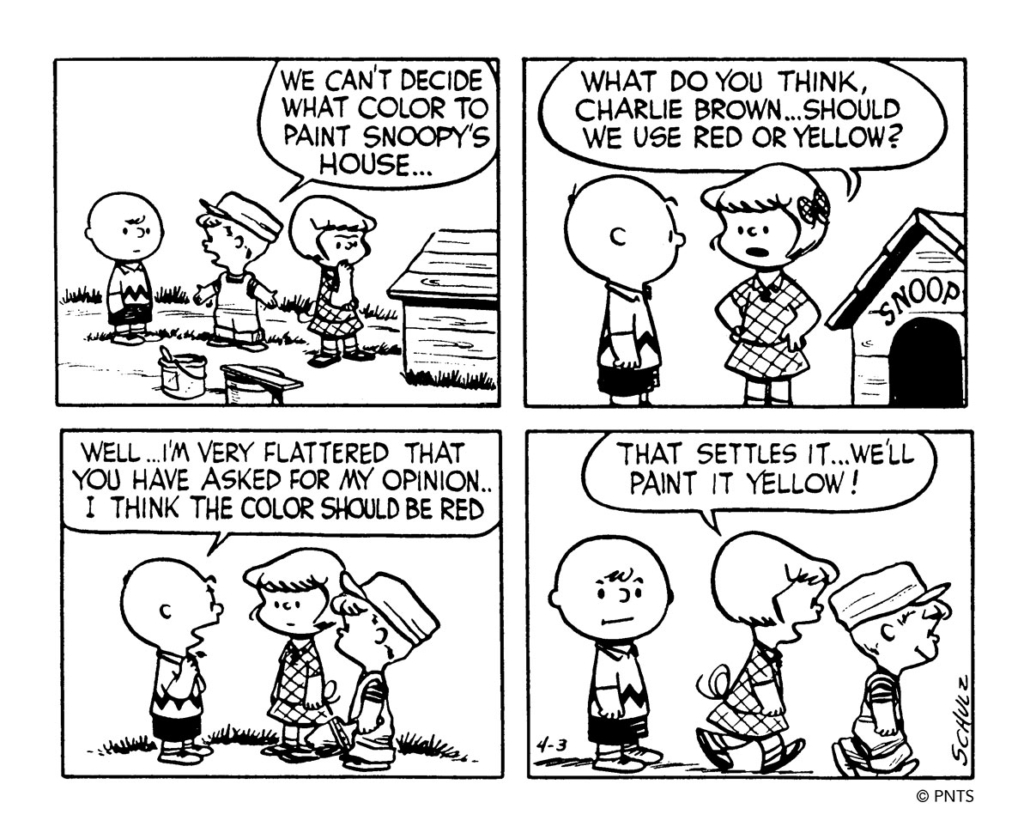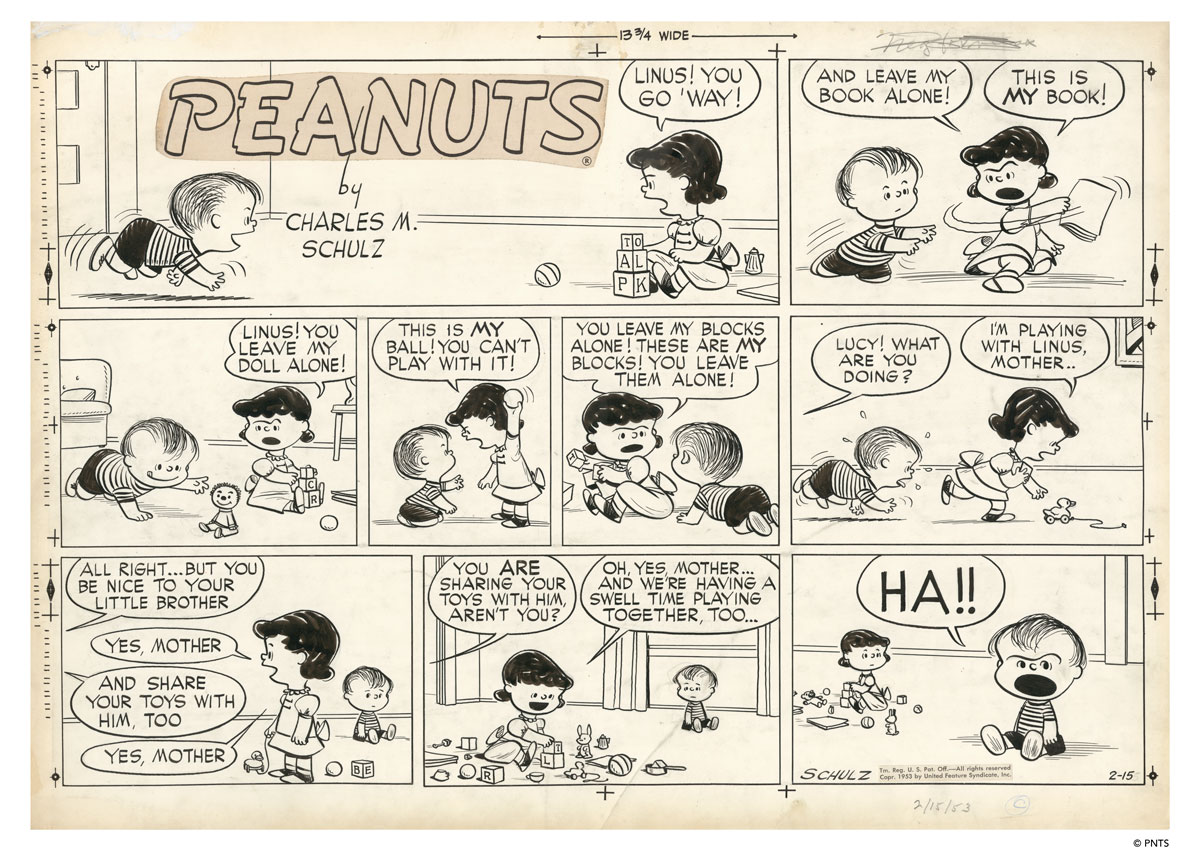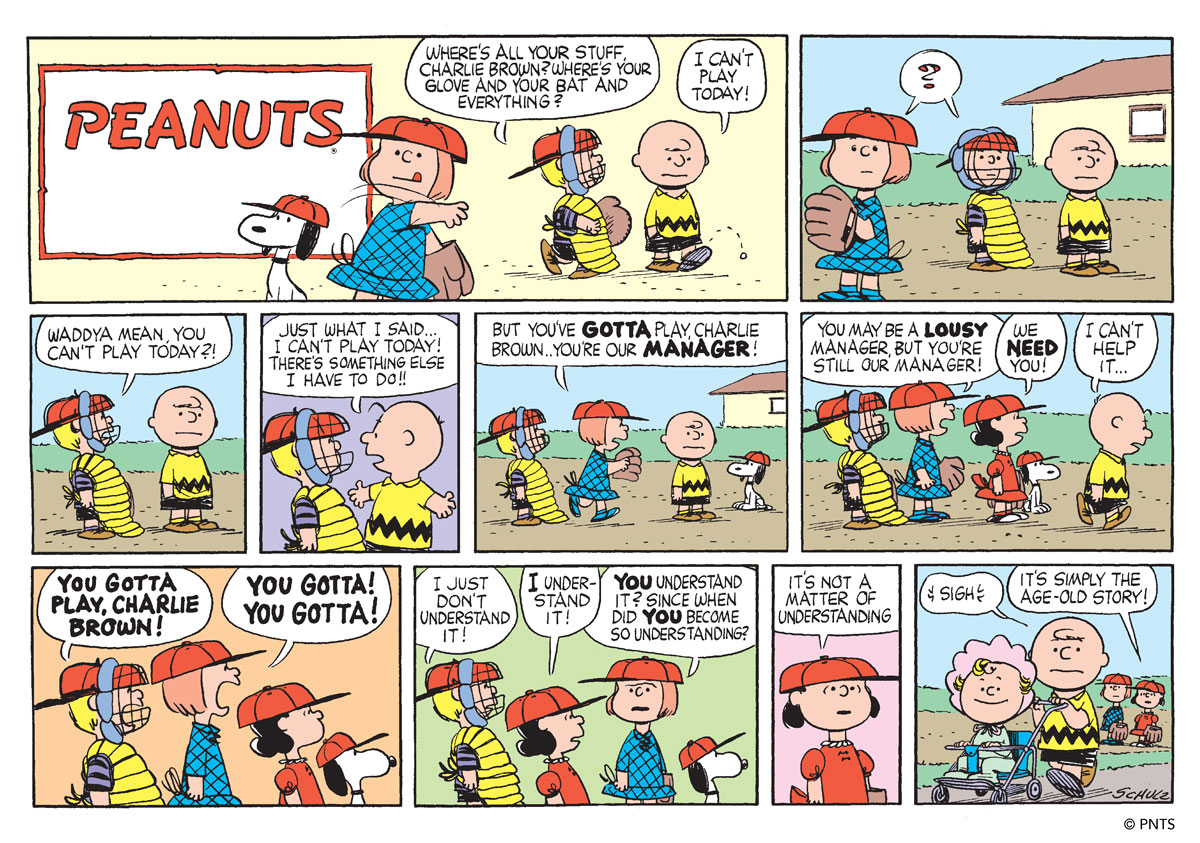The Heart & Soul
From the beginning, I have called the “Strip Gallery” the heart and soul of the Museum because there, we display only original comic strips so that visitors can see the line work and any corrections or erasures up close. (We may use reproductions in the Main Gallery and Upstairs Gallery if we don’t have the originals needed to tell the story.)
The Strip Gallery is currently in the process of a two-year project to display the strips decade by decade. The strips from the 1950s were de-installed so the ’60s strips could have their moment in the spotlight. Although I have seen these strips many times before, I took a last look at them before the de-install and noticed some interesting things I would have pointed out to visitors when taking them through the exhibition.
Schroeder debuted as a baby in 1951. In less than a year, he is playing what I believe is a phrase from Beethoven’s Hammerklavier Sonata (which takes a lot of physical force to play). And at the end of the decade, he has become somewhat of a Beethoven scholar.
Such is the world of comic strips—one can’t let characters stagnate.
As noted in these strips, Charlie Brown was initially sort of a smart aleck—and maybe just a touch arrogant.
The two girls, Violet and Patty, picked on Charlie Brown, as girls sometimes will, but they got their comeuppance, I guess, as they were dropped from the strip before very long.
The gag of Charlie Brown losing his clothes began early—with a combination of a missed kick and his socks and shoes flying. Later, in the 60s, it was changed to the line drive on the baseball field that knocked Charlie Brown into the air and sent all his clothes flying. We all remember those strips; Sparky loved drawing them, and through the years, visitors can see how a kernel of an idea may turn into another arrow in the artist’s quiver.
Then there is the matter of the offstage voices—which Sparky tried in 1953.
Sparky soon realized that putting the characters into everyday domestic situations was not the direction that he wanted his comic strip to take, and so the parents went the way of Violet and Patty, to the dustbin of history.
In 1954, we see a strip that is recognized as a turning point in Charlie Brown’s history—the long, silent walk home to the striking difference between the children’s toys in his life and in Shermy’s.
Toward the end of the decade, Charlie Brown admits to the doldrums, which will last a long time.
By the end of the 50s—
- Charlie Brown has a sister, Sally, and he’s relegated to pushing her around the block in her stroller while his baseball team is playing;
- Snoopy is sleeping on top of his doghouse;
- and Charlie Brown and Linus have found their “Philosopher’s Wall,” which the characters will use well in the coming decades!
—Jean Schulz

 Peanuts, April 3, 1953
Peanuts, April 3, 1953

















